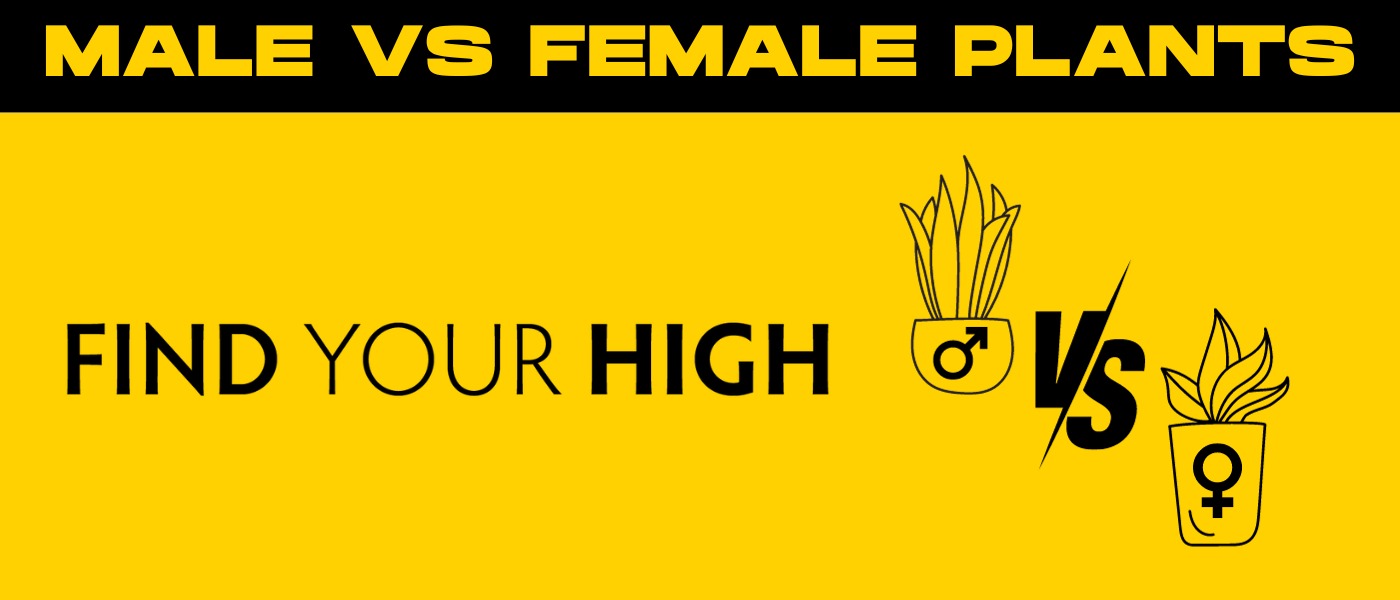When it comes to growing cannabis, it’s important not to overlook the basic differences between the male vs female weed plant. It’s not just a biological curiosity – it actually makes a big difference for the grower.
If you want to build a successful cannabis grow op and get the most out of your yield, it’s crucial to understand these differences. In this blog, we’ll dive into the key distinctions between male and female plants, why it’s important for growers to tell them apart, and how these differences affect the overall cultivation process and output.
Whether you’re a newbie or a seasoned pro, this one’s for you. Let’s begin!
The Anatomy of Male and Female Cannabis Plants
When it comes to growing cannabis, knowing the ins and outs of male cannabis plants and female cannabis plants is super important. The following section dives into the nitty-gritty of how they’re different and what makes them unique.
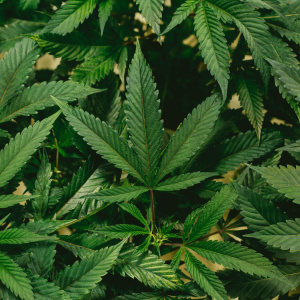
Male Plant Characteristics
1. Structure and appearance
Male cannabis plants usually have a tall and lean appearance, growing up to six feet or more. Instead of the buds found on female cannabis plants, they have small, round clusters called pollen sacs. When these pollen sacks mature, they burst open and release pollen into the air.
2. Purpose in Cannabis Cultivation
While female plants may steal the spotlight, let’s not forget about the unsung heroes of the cannabis world – the male plants! They may not produce the same buds as their female counterparts, but they do produce pollen and definitely know how to spread the love with their pollen. Male cannabis plants play a vital role in the reproductive cycle, ensuring seed production and promoting genetic diversity for breeding purposes.
Female Plant Characteristics
1. Structure and Appearance
Female cannabis plants have a more compact and bushy appearance compared to their male counterparts. They produce beautiful buds or flowers, which are the part of the marijuana plant that is usually sought after for its therapeutic and recreational properties. These buds are covered with tiny, crystalline structures called trichomes that contain the marijuana plant’s active compounds, cannabinoids.
2. Importance in Cannabis Cultivation
In the fascinating world of cultivation, the future is female. Well, at the very least, female plants reign supreme. Why, you ask?
They produce the sought-after buds we all know and love. The flower buds that are packed with THC, CBD, and other cannabinoids. And we’ll let you in on a grower’s secret – by keeping them away from the pollen produced by male plants, we get seedless buds, a.k.a. sinsemilla! These ladies are the VIPs of cultivation, delivering both potency and flavor.
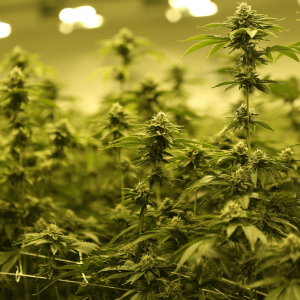
Reproduction and Pollination
If you’re hoping to start your very own breeding program, understanding the process of reproduction and the role of pollination is crucial.
Male and female cannabis plants reproduce through a process known as sexual reproduction, where the pollen from male cannabis plants fertilizes the female plants, resulting in seed production.
Pollination plays a pivotal role in this process, serving as the natural mechanism for the transfer of pollen from the male stamen to the female pistil. However, growers often aim to control pollination.
By preventing male cannabis plants from pollinating females, they can inhibit seed production and encourage the growth of potent, resinous buds, which are prized for their higher yields and quality. These factors play a crucial role in optimizing cultivation by highlighting the importance of managing pollination.
The Female Cannabis Plant: Bud Production and Cannabinoid Production
Female cannabis plants are the star performers in flower production and cannabinoid production.
The process begins when the light cycle shortens, signaling the plant to enter the flowering phase. As the flowering stage progresses, the cannabis plant develops small, translucent hairs known as pistils. These pistils are the earliest sign of bud formation. Gradually, the pistils cluster together, forming what we recognize as cannabis buds.
Buds are vital to cannabis consumption because they pack the highest concentration of cannabinoids, which you may know as the chemical compounds responsible for various effects in the human body.
Cannabinoids are found predominantly in the trichomes, which are tiny, crystal-like appendages covering the buds. When cannabis is consumed, these cannabinoids interact with our body’s endocannabinoid system, resulting in the plant’s ‘high’ that we all know and love.
The way female plants produce cannabinoids is truly fascinating. As the cannabis plant matures and the buds develop, the trichomes begin to produce cannabinoids.
The most well-known cannabinoids, tetrahydrocannabinol (THC) and cannabidiol (CBD), are produced in these trichomes. Other minor cannabinoids, such as cannabigerol (CBG) and cannabinol (CBN), are also produced during this phase. Note that the concentration of different cannabinoids can vary widely depending on the plant’s genetics, growing conditions, and harvest time.
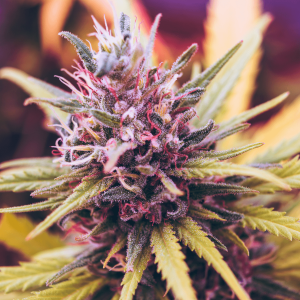
The Male Cannabis Plant: Cannabis Breeding and Seed Production
A common misconception is that only female cannabis plants hold value. However, male cannabis plants play a crucial role in the breeding process. After all, we wrote an entire blog about male cannabis plants.
But to give you some background, male cannabis plants are the ones that provide pollen, which is needed to fertilize the female plants. Once fertilized, the female plants produce seeds. This process allows cultivators to mix and match characteristics from different strains, producing unique and targeted effects.
Creating hybrid strains is a complex and meticulous process. Breeders carefully select both male and female plants, considering the traits each one possesses. The goal is to combine the best attributes of each parent plant. For example, one mother plant might be chosen for its high THC content, while the other might be selected for its resistance to pests. The pollen from the male cannabis plant is then used to fertilize the female cannabis plant, resulting in a hybrid strain that inherits traits from both parents.
Seed production is super important in the cannabis industry. Having a strong seed market allows producers to grow different strains to best match a wide variety of consumer tastes.
Furthermore, seeds are also a more reliable and efficient way of growing cannabis, as they ensure a high percentage of successful plants. These cannabis seeds can be sold directly to other growers and consumers, providing an additional revenue stream for cannabis cultivators.
Identifying and Managing Male Plants in Cultivation
Spotting and handling the male plant early on is a crucial skill. Not only can male plants mess up your yield’s potency by pollination, but they can also give you a bunch of seeds you probably don’t want.
To identify male cannabis plants early on, keen observation is key. The sex of a cannabis plant becomes evident once it begins to form pre-flowers, typically during the vegetative stage.
Male pre-flowers are small, round, and often extend from a small stalk. They are substantially different from the tear-shaped and hair-studded pre-flowers of females.
Knowing these differences is crucial for successfully growing your cannabis crop. There are various techniques for determining the sex of cannabis plants, from identifying pre-flowers to more advanced methods like taking clones or using DNA-based testing.
By accurately identifying and promptly removing male plants, you maintain control over the reproductive process, ensuring a more reliable and potent harvest.
Female vs. Feminized Seeds
Understanding the differences between female and feminized seeds is integral to a successful crop.
The concept of feminized seeds revolves around breeding and sexing cannabis through genetic manipulation. Essentially, feminized seeds are designed to produce only female cannabis plants. This is achieved by stressing a female plant into producing pollen, which is then used to pollinate another female. The seeds resulting from this process are feminized, with a 99% chance of growing into a female plant.
There are several advantages and disadvantages to consider when using feminized seeds. On the upside, feminized seeds eliminate the guesswork involved in identifying and removing male plants, which inherently simplifies the cultivation process. This ensures that all your resources are put into plants that will produce consumable buds.
However, on the flip side, feminized seeds carry a higher risk of producing hermaphroditic plants, especially if subjected to stress during growth. Also, they don’t offer the genetic diversity that regular seeds do, which can be a disadvantage if you are interested in crossbreeding.
Selecting the right type of seed for your cannabis cultivation depends on your individual goals, resources, and expertise. If you aim for an easier, more streamlined growing process with guaranteed female plants, feminized seeds are the way to go. However, if you’re interested in genetic diversity or breeding your own strains, regular male seeds may be the better choice.
Whatever the selection, the key is to ensure that you source your seeds from a reputable supplier to ensure quality and authenticity.
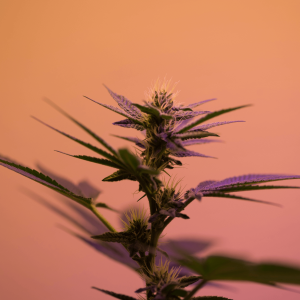
Conclusion
To sum it up, understanding the key differences between male flowers and female cannabis plants is integral to successful cultivation.
Male plants, primarily responsible for pollination, can hinder the growth of buds on female plants if not separated in a timely manner. On the other hand, female plants are prized for their potent, resinous buds that are harvested for medicinal and recreational use.
Identifying the sex of your cannabis plants early ensures the quality of your yield, making it a critical skill for any cannabis cultivator. By diving into the male vs. female cannabis plant debate, cultivators can make informed decisions, optimizing their harvest and enhancing the overall quality of their grow.
Frequently Asked Questions
1. Is it better to have a male or female weed plant?
When it comes to growing weed, both the male cannabis plant and the female cannabis plant have their respective roles. However, female plants are often preferred by most growers for their ability to produce high-potency buds rich in cannabinoids, specifically THC, the psychoactive compound responsible for the ‘high’ effect. Male plants, while less popular, are important for breeding and genetic diversity, as they pollinate the female plants to produce seeds. With that being said, the choice between male and female weed plants largely depends on the grower’s objectives.
2. Can a weed plant change from female to male?
Yes, a cannabis plant’s gender can change from female to male under certain conditions. This process is called “hermaphroditism” or “herming out.” Typically, cannabis plants turn into hermaphrodite plants due to stress factors such as extreme weather conditions, damage, disease, or genetic factors. While this is a survival mechanism, it can compromise the quality of the harvest if a female plant developing buds turns into a male and starts producing pollen.

 Rewards
Rewards




